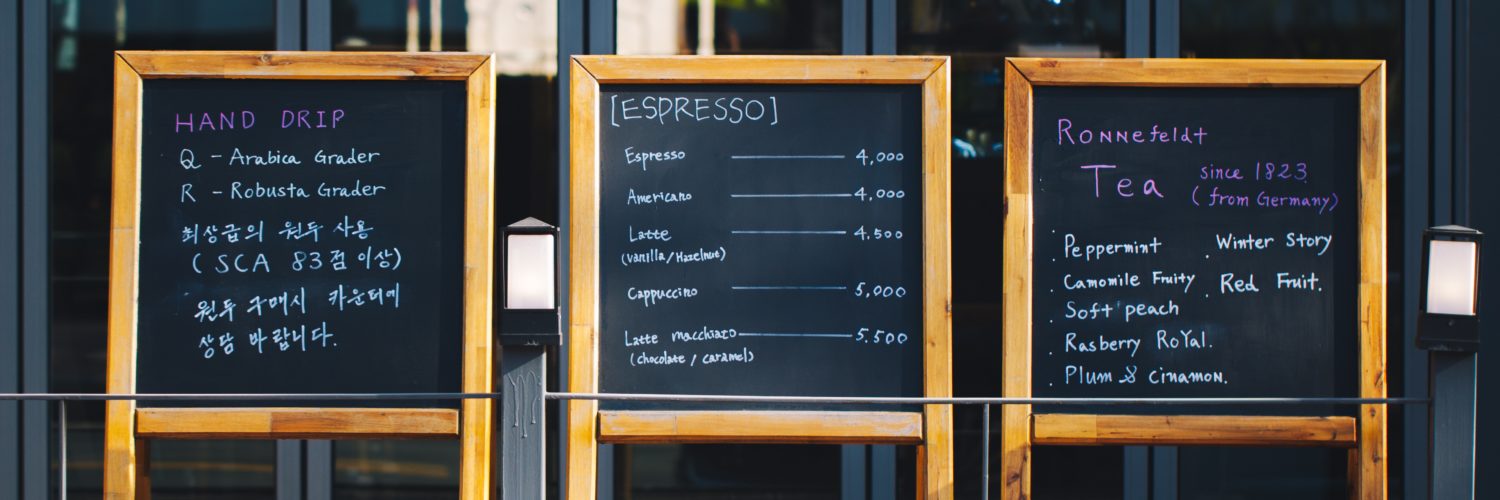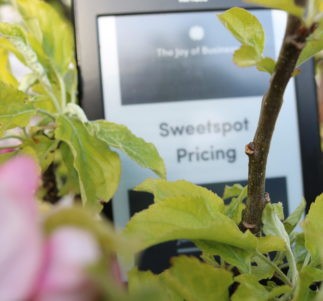How to feel good about charging more

Most people have some difficulty in charging more money for what they sell.
The most common reason for this is that we don’t feel confident in setting a higher price.
Here’s how to get over that, and start charging the right price for you. It is what I call your sweet spot price.
Why we don’t feel confident about charging more
Your confidence is probably one of the main factors in not setting your prices high enough. Most of us battle with being able to set prices higher.
We might have fears about not being good enough, and we might worry that our clients will desert us. Or we might feel that we can’t “get away with it”. Here’s Mark Vaesen, MD of brand agency Tomango, talking about his experience the first time he got up the nerve to increase his prices.
Some of us might feel that our products aren’t as good as our competitors or that people will never pay that much.
During economic difficulties, this fear can be a biggie for many businesses — the feeling that they need to hold on to the clients they have and that this isn’t the right time to risk increasing prices.
Except it probably is exactly the right time to review your pricing strategies.
We don’t want to feel pushy by charging more
Some of us have been told from an early age that we mustn’t be too pushy. Lots of us were given a good dollop of all that rubbish when we were young. But when we’re adults, we can look at many of the things that our parents and teachers told us and see them for the nonsense they were.
It’s particularly interesting to see how my female clients are often less assertive about pricing than my male clients.
And, of course, it’s a peculiarly British trait not to want to be seen as arrogant or pushy. Other cultures have more of a ‘go ahead’ attitude or a history of haggling for even the smallest of transactions.

But confidence in business (or the trick of making yourself confident) is one of the key success factors needed to grow your business.
Sometimes we could all do with being just a little more assertive, and take a few small carefully calculated risks. Such as asking potential clients for more money.
What people say when I tell them to increase their prices
Here are some of the things people have told me about why their prices are lower than I think they should be:
“I’m just starting, I can’t charge more.”
“That might make me look greedy.”
“I don’t think my customers would like that.”
“Not sure my customers would pay that much.”
“I’m not doing this for the money.”
“I just need enough to live on.”
“Some of my clients don’t have a lot of money.”
“They can do this for themselves for free.”
“They can use X product for free.”
Here’s how I encourage clients to start charging more
Here are some of my responses. Pick one of the objections to raising prices that you might say yourself and see what you think when you hear my answer. Some people have told me that it’s helpful to say these things out loud, so you understand the whole discussion.
You: “I’m just starting, I can’t charge more.”
Julia: “Why not? Does anyone know from your website that you’re just starting? They don’t need to know that.”
Or
Julia: “You have 15 years of experience, you’ve worked with the best people in the world, and you’ve just told me that the clients at your last job loved what you did.”
Or
Julia: “Is it fair to your clients to offer them something that looks like a cheapo service from someone who has just started and doesn’t know what they’re doing?”
That last one was a bit harsh, I know.
I did say it once to someone who was amazingly talented at some technical stuff I didn’t understand but had somehow adopted a pink logo with a cartoon version of herself. She knew exactly what I meant, and ditched the logo.

You don’t want to appear to be greedy by charging more
You: “That might make me look greedy.”
Julia: “It’s not greedy to want to earn a good living. It’s greedy to be a big corporation, pay yourself a five-million-pound bonus while sacking your lowest paid staff and not paying any corporation tax. That’s not what I hear you say that you want to achieve? So I’m not getting even the slightest hint of greediness.”
You: “I don’t think my customers would like that.”
Julia: “But would they pay it? We don’t necessarily need to be liked by our customers; we need them to pay for a good product and feel that it provides them with what they need.”
The big one
You: “Not sure my customers would pay that much.”
Me: “Shall we try?”
What to do if you find yourself coming up with these objections
You have a few options here.
Option one
Recognise these as the self-limiting beliefs they probably are, and increase your prices for the next three potential clients you meet.
Option two
Get yourself a copy of my book Sweetspot Pricing and accurately work out what you should be charging, and how to do the right marketing to support that price so that people will be queuing up to pay it.
Option three
Do nothing, and everything will stay the same. Maybe cross your arms and refuse to change, like this person. Not really, this body language is not recommended for selling more, let alone persuading people to pay your sweetspot price.

Would you like to feel more confident about setting the right price for what you sell?
Getting your pricing right is the number one issue I work on with my one to one coaching clients. Because it’s usually the quickest, easiest win we can make to start increasing profitability. And my clients want to make more money and have more fun.
Isn’t that the whole point of running your own business?
I feel so strongly about pricing for small business, I’ve written a book about pricing for small businesses. Sweetspot Pricing gives you everything you need to get a clear idea about what you should be charging, and how to encourage people to pay you the right amount. Take a look.
More good ideas about pricing for you
Why pricing is a marketing issue too
Start changing your pricing by working out your target income. Here are some ideas for setting your success income target
Why giving discounts is a bad idea (and the few times when it is a good idea)
How Mark Vaesen put his prices up without pooing his pants (his phrase, not mine)
Photo credits to Bundo Kim on Unsplash, Randy McEoin on Flickr and Liz Finlayson from Vervate


